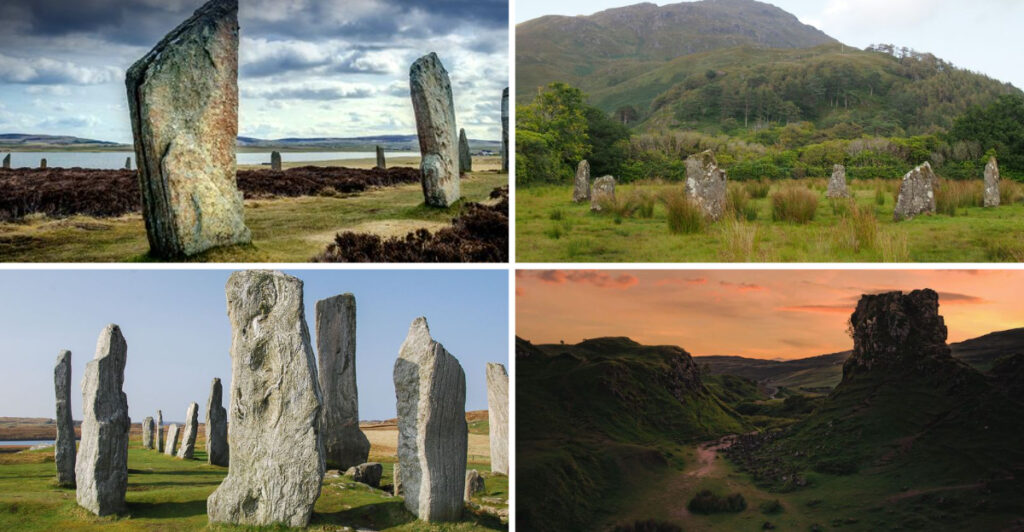Scotland’s remote islands hold secrets that predate England’s famous Stonehenge by thousands of years. Scattered across windswept landscapes, these ancient stone circles tell stories of prehistoric civilizations and their mysterious rituals. Many visitors focus on mainland attractions, missing these incredible archaeological treasures that offer glimpses into humanity’s distant past.
1. Orkney’s Ring of Brodgar

Standing proudly on a narrow strip of land between two lochs, this magnificent circle originally contained 60 massive stones. Today, 36 stones remain upright, creating an awe-inspiring sight that has captivated visitors for generations.
Built around 2500 BCE, the Ring of Brodgar represents one of Scotland’s most important Neolithic monuments. Archaeological evidence suggests it served as a ceremonial gathering place for ancient communities across the Orkney Islands.
2. Lewis’s Callanish Stones
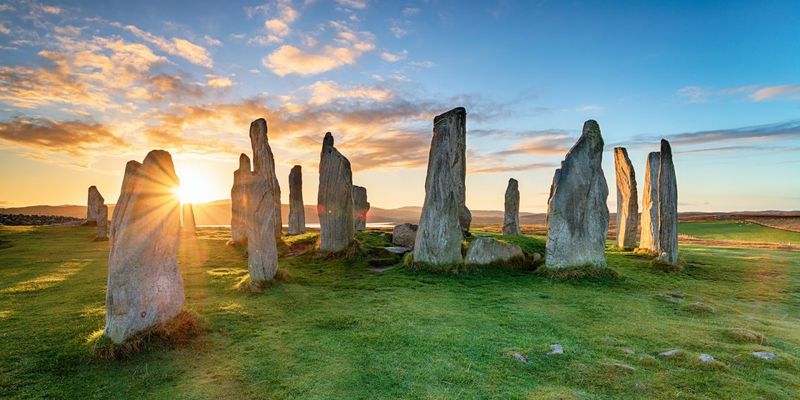
Resembling a Celtic cross from above, these 13 primary stones create one of Scotland’s most photographed prehistoric sites. The central monolith towers over its companions, reaching nearly 16 feet into the Hebridean sky.
Carbon dating reveals the site’s construction began around 2900 BCE, making it significantly older than Stonehenge. Local legends claim the stones were once giants who refused to convert to Christianity and were turned to stone as punishment.
3. Arran’s Machrie Moor Circles
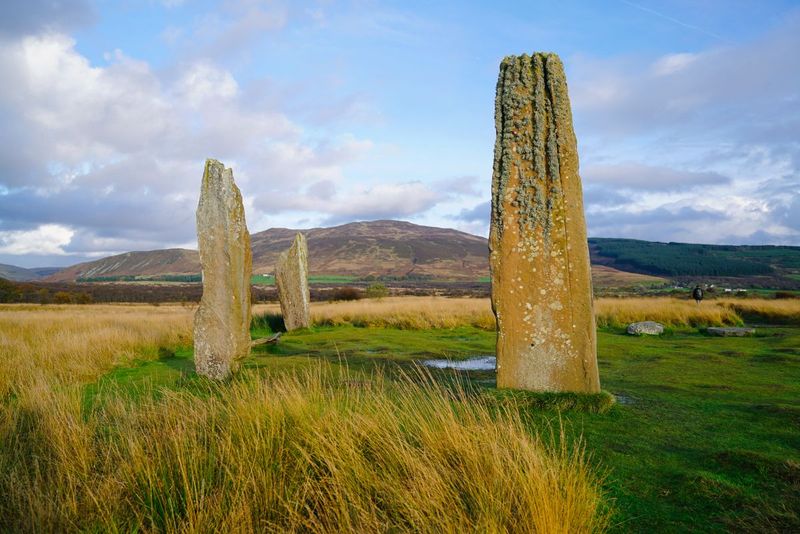
Six distinct stone circles dot this atmospheric moorland, each telling its own prehistoric story. Circle 1 contains the tallest stones, with some reaching over 18 feet in height, creating dramatic silhouettes against the island’s mountainous backdrop.
Dating from around 2000 BCE, these circles likely served different ceremonial purposes for Bronze Age communities. Visitors often report an otherworldly feeling when walking among these ancient monuments during misty Scottish weather.
4. Shetland’s Stenness Circle
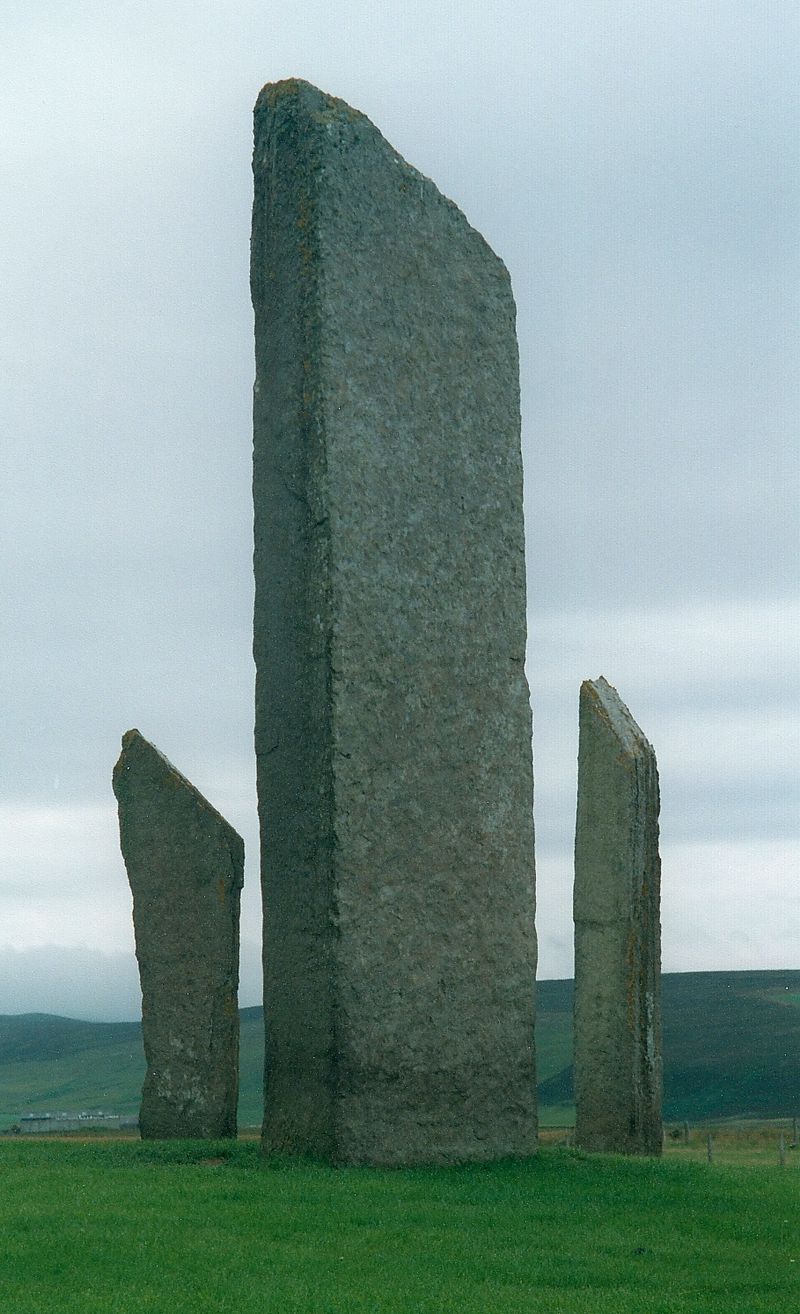
Four surviving stones mark the remains of what was once a perfect circle of 12 massive monoliths. Each remaining stone stands over 15 feet tall, creating an impressive monument that has withstood 5,000 years of harsh Shetland weather.
Archaeological excavations revealed cremated human remains within the circle, suggesting it served as an important burial site. The monument’s proximity to other Neolithic sites indicates this area was a significant ceremonial landscape for ancient communities.
5. Skye’s Fairy Glen Stone Circle
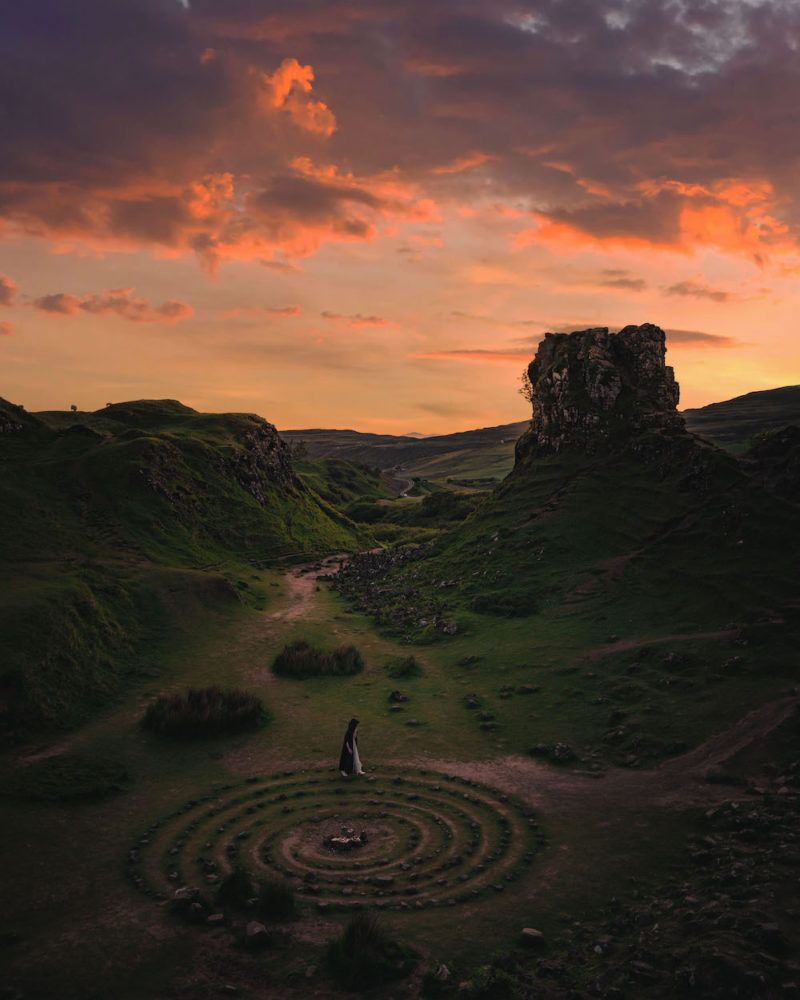
Hidden within a landscape that seems straight from a fantasy novel, this small but perfectly preserved circle captures imaginations with its mystical setting. The surrounding conical hills and miniature lochs create an enchanting backdrop for the ancient stones.
Though smaller than other Scottish circles, dating suggests construction around 2500 BCE. Local folklore claims fairies still dance around these stones during full moons, and many visitors report unusual photographic anomalies when taking pictures here.
6. Mull’s Dervaig Stone Circle
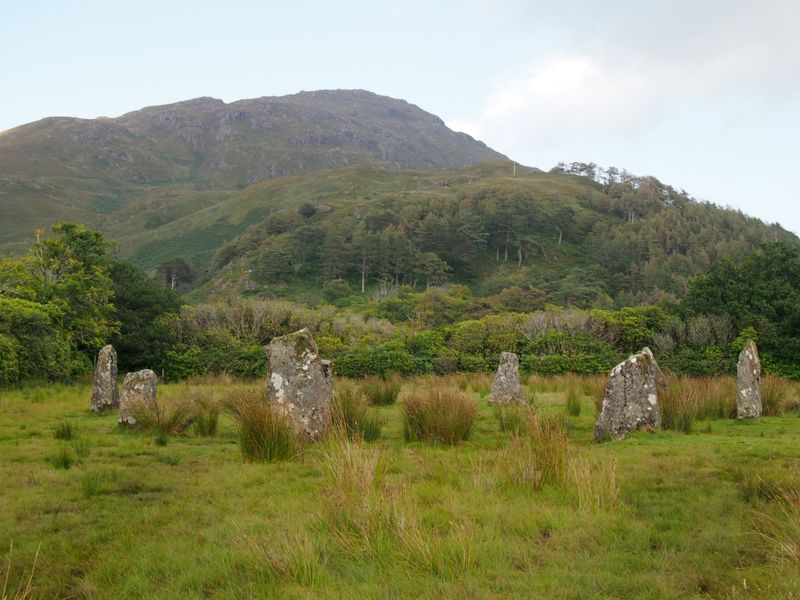
Nestled in a peaceful valley, this intimate circle of nine stones creates a serene atmosphere perfect for contemplation. Unlike grander monuments, Dervaig’s modest size suggests it served a local community rather than regional gatherings.
Built around 2000 BCE, the circle shows evidence of careful astronomical alignment with seasonal solar events. Recent archaeological surveys discovered pottery fragments and charcoal deposits, indicating the site hosted ceremonial fires and ritual feasting for ancient island dwellers.
7. Islay’s Cultoon Circle
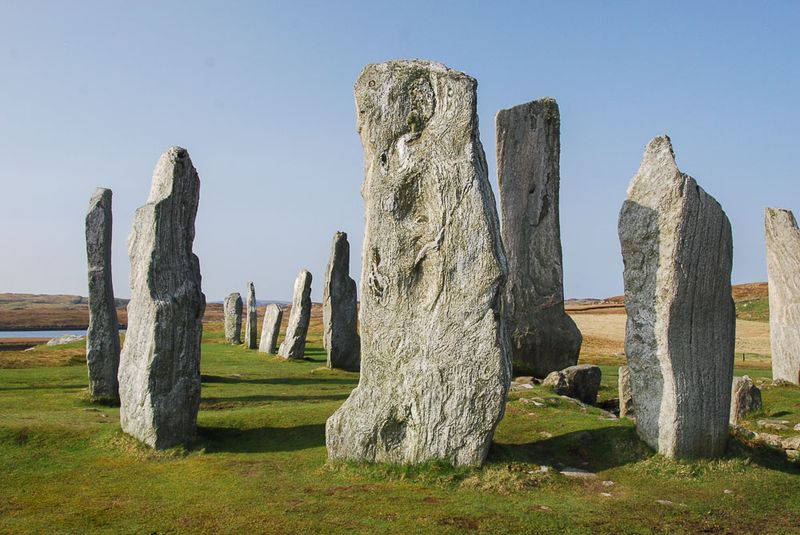
Whisky lovers visiting Islay’s famous distilleries often overlook this remarkable Bronze Age monument. Three massive stones remain from the original circle, each carved with mysterious cup-and-ring markings that archaeologists still struggle to interpret.
Constructed around 1800 BCE, Cultoon represents one of Scotland’s most enigmatic stone circles. The intricate carvings suggest sophisticated symbolic thinking among ancient island inhabitants, possibly representing maps, calendars, or spiritual beliefs we may never fully understand.
8. Jura’s Standing Stones of Sannaig
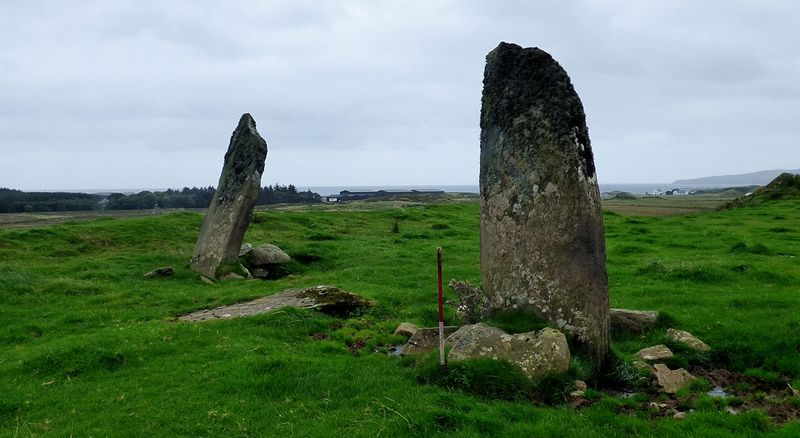
George Orwell wrote “1984” on Jura, but few know the island also hosts this atmospheric stone circle. Seven stones create an irregular but intentional pattern, with the largest stone featuring a natural hole that frames distant mountains perfectly.
Dating to approximately 2200 BCE, archaeological evidence suggests the circle served astronomical purposes. The hole in the main stone aligns with specific star positions, indicating ancient inhabitants possessed sophisticated knowledge of celestial movements and seasonal changes.
9. Barra’s Brevig Stone Circle
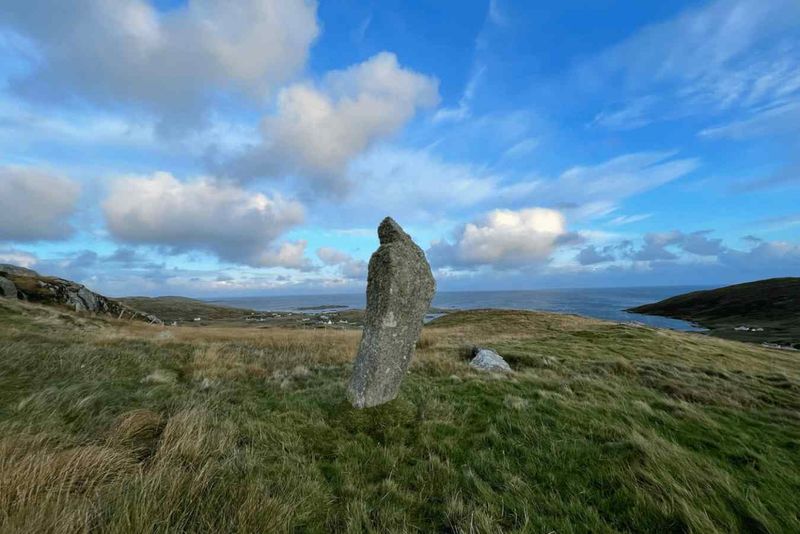
Perched on a hilltop overlooking pristine beaches, this circle offers spectacular views across the Sound of Barra. Five surviving stones create a dramatic silhouette against ever-changing Hebridean skies, making it a photographer’s dream location.
Built around 2400 BCE, the circle’s elevated position suggests it served as both ceremonial site and navigation landmark for ancient seafarers. Recent discoveries of Bronze Age artifacts nearby indicate the area remained important for ceremonial activities across multiple prehistoric periods.
10. Tiree’s Balephuil Circle
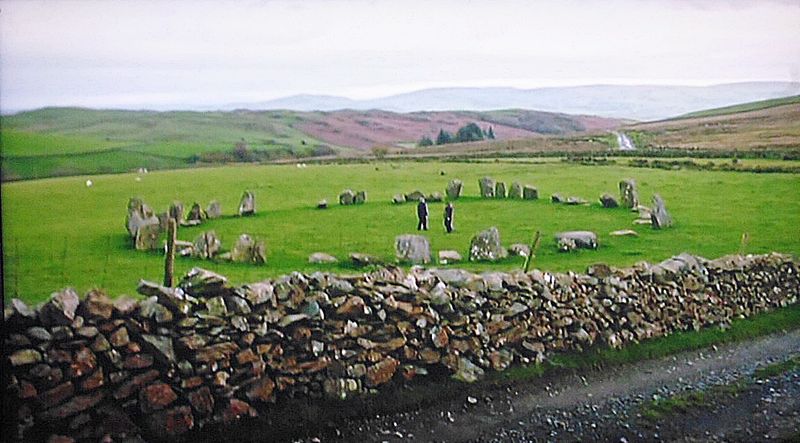
Known as Scotland’s sunshine island, Tiree hosts this beautifully preserved circle of eight stones arranged in a perfect oval. The monument’s excellent condition allows visitors to experience the site much as ancient builders intended thousands of years ago.
Constructed around 2300 BCE, the circle shows clear evidence of astronomical alignment with summer solstice sunrise. Local tradition maintains that walking clockwise around the stones three times brings good fortune, though archaeologists suggest this ritual may have prehistoric origins.
11. Colonsay’s Fingal’s Limpet Hammers
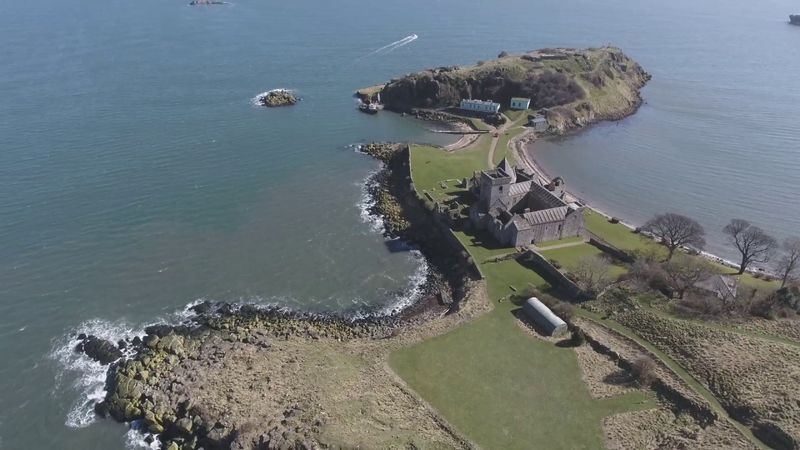
Despite its unusual name, this site contains genuine Bronze Age standing stones arranged in a distinctive horseshoe pattern. Local legend claims the giant Fingal used these stones as hammers for cracking limpet shells, hence the colorful title.
Archaeological dating places construction around 1900 BCE, during a period of increased cultural exchange between Scottish islands. The horseshoe arrangement differs from typical circular patterns, suggesting unique local traditions or influences from other prehistoric cultures visiting this strategic island location.
12. Coll’s Totronald Stone Circle
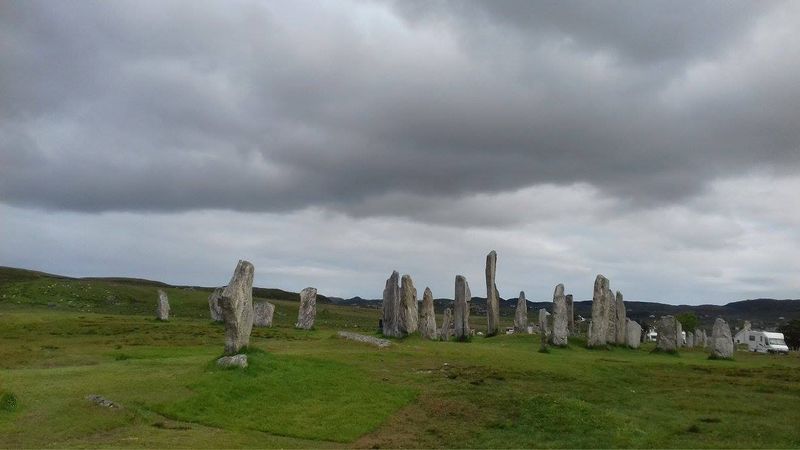
Hidden among sand dunes near Coll’s western shore, this circle requires determined exploration to locate. Four weathered stones mark the corners of what was once a complete circle, now partially buried by centuries of shifting sands.
Built around 2100 BCE, the circle’s coastal location suggests connections to maritime activities and seasonal fishing camps. Archaeological surveys revealed shell middens and fire-cracked stones nearby, indicating the site served as a focal point for prehistoric communities exploiting rich marine resources.
13. Eigg’s Massacre Cave Circle
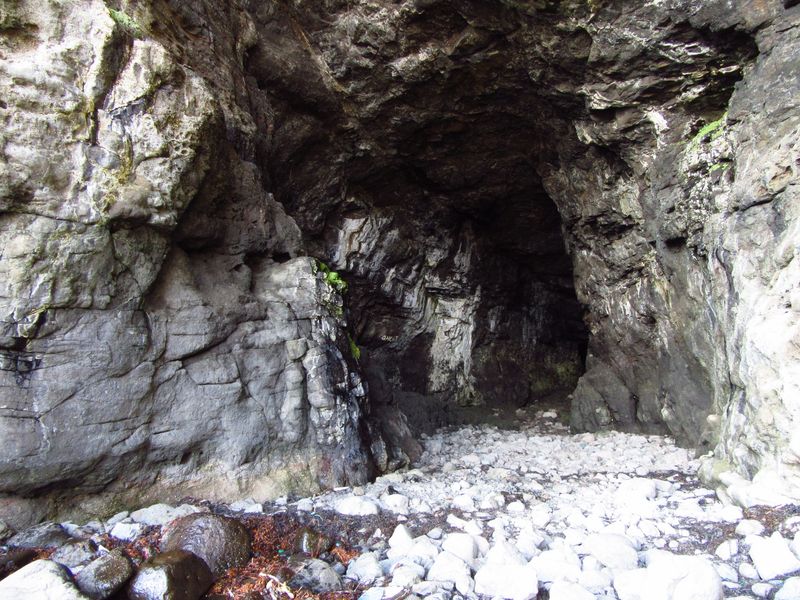
Located near the island’s infamous Massacre Cave, this small circle of six stones carries both prehistoric and historic significance. The juxtaposition of ancient monument and tragic historical site creates a powerful sense of temporal layering.
Constructed around 2000 BCE, the circle predates the cave’s dark history by millennia. Recent archaeological work suggests the stones may have served as territorial markers, defining sacred or significant landscape boundaries for Bronze Age communities inhabiting this dramatic volcanic island.
14. Rum’s Kinloch Stone Setting
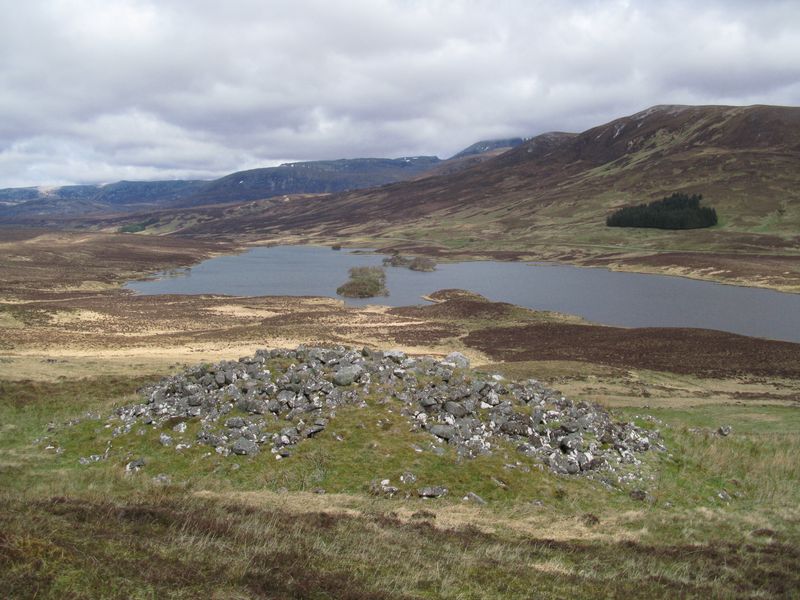
National Nature Reserve status protects both Rum’s wildlife and this remarkable prehistoric monument. Three massive stones create a linear arrangement rather than circular pattern, suggesting different ceremonial purposes from typical stone circles.
Dating to approximately 2200 BCE, the monument’s unique design reflects local adaptation of widespread stone circle traditions. Archaeological evidence indicates the site remained significant throughout the Bronze Age, with successive generations adding artifacts and maintaining the monument’s ceremonial importance.
15. Canna’s Compass Hill Circle
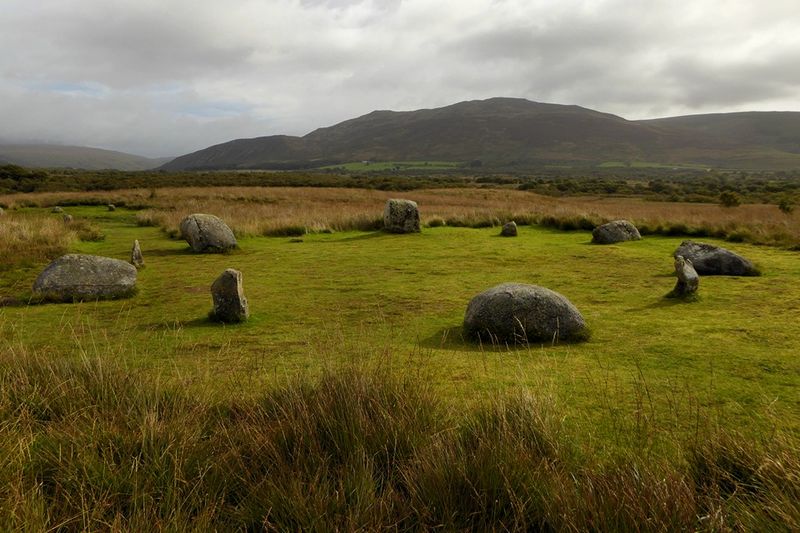
Positioned on the island’s highest point, this circle offers panoramic views across the Small Isles and mainland Scotland. Seven stones create an irregular but intentional pattern, with the largest stone serving as a natural compass point for navigation.
Built around 1800 BCE, the circle’s elevated position suggests dual purposes as ceremonial site and maritime landmark. Archaeological surveys discovered Bronze Age pottery and metalwork fragments, indicating the location hosted significant gatherings for communities across multiple islands in the Inner Hebrides.
16. Raasay’s Clachan Stone Circle
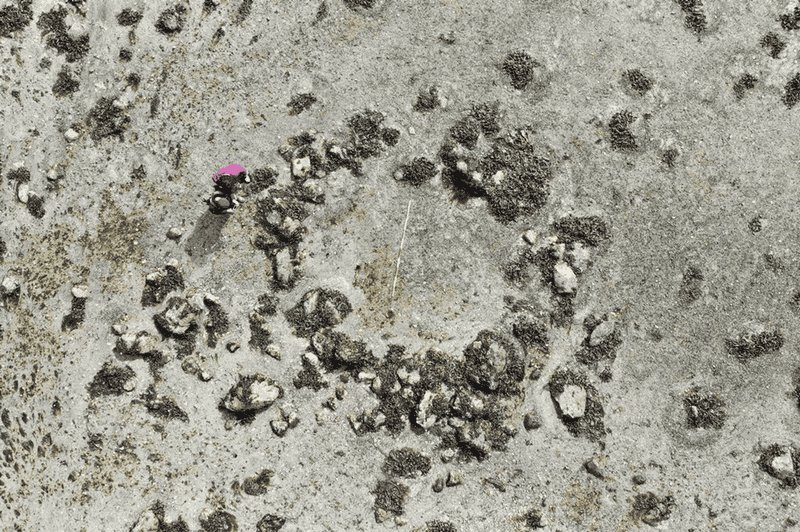
Tucked away in Raasay’s interior, this circle requires a pleasant hike through heather-covered hills to reach. Five surviving stones create an intimate setting that feels untouched by modern world intrusions, offering genuine connection with prehistoric past.
Constructed around 2300 BCE, the circle’s remote location suggests it served local communities rather than regional gatherings. Recent archaeological work uncovered evidence of ritual deposits, including worked flint and pottery fragments, indicating the site maintained ceremonial significance across multiple generations.
17. Lismore’s Cathedral Circle
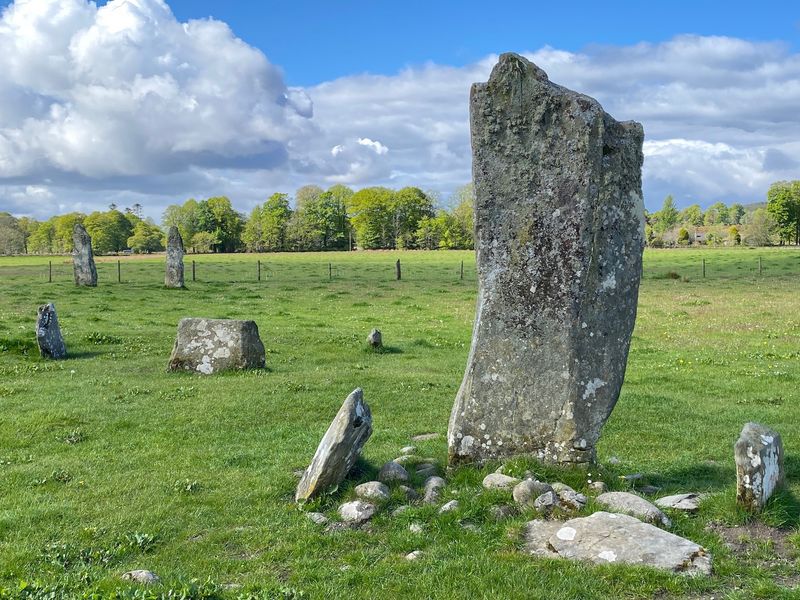
Predating the medieval cathedral by thousands of years, this ancient circle demonstrates the island’s long history as a sacred landscape. Four weathered stones survive near the later Christian site, creating fascinating dialogue between prehistoric and historic spiritual traditions.
Built around 2400 BCE, the circle’s location suggests ancient inhabitants recognized this spot’s spiritual significance long before Saint Moluag established his monastery. Archaeological evidence indicates continuous religious activity at the site across multiple millennia, representing remarkable cultural continuity.

